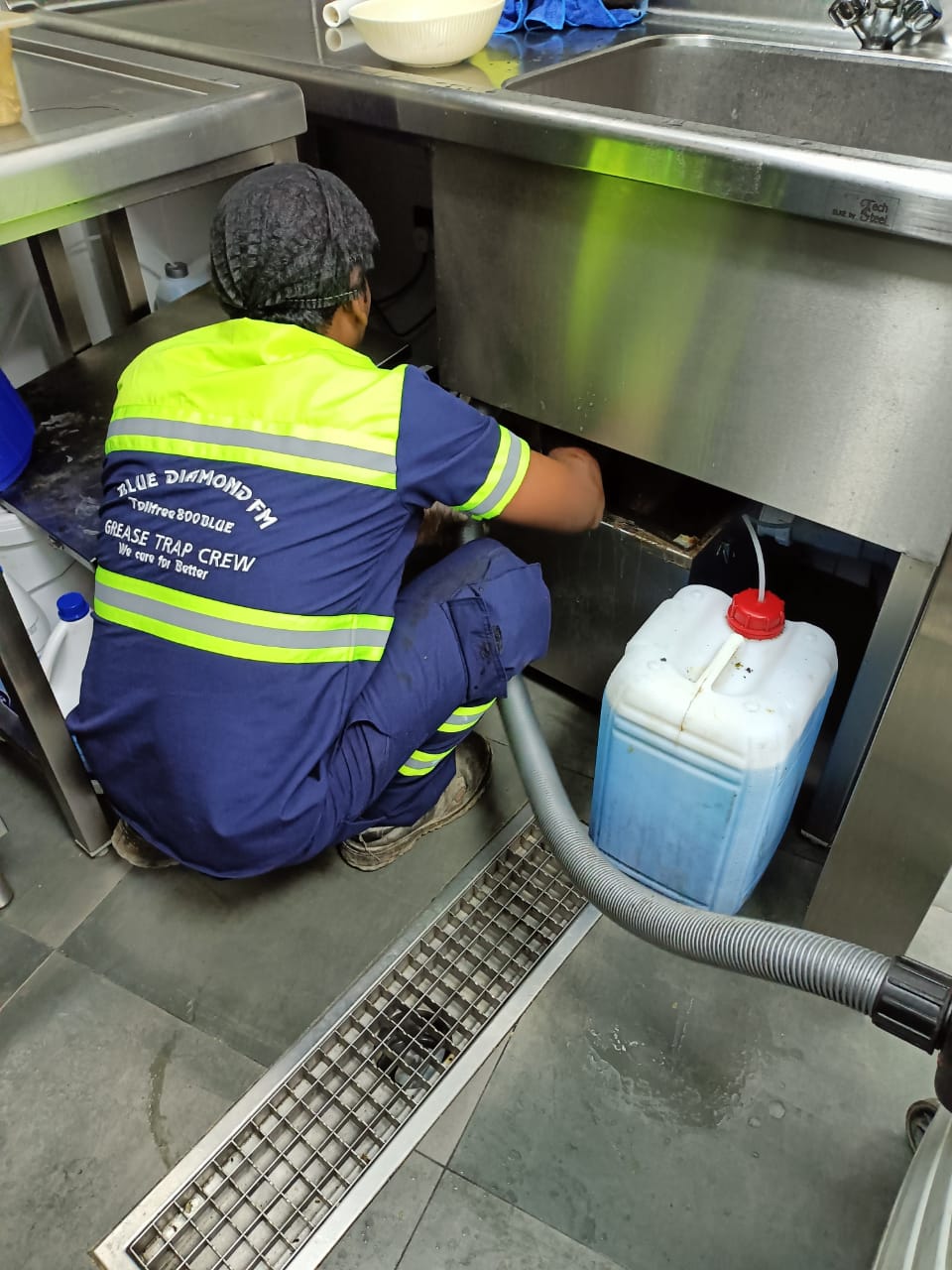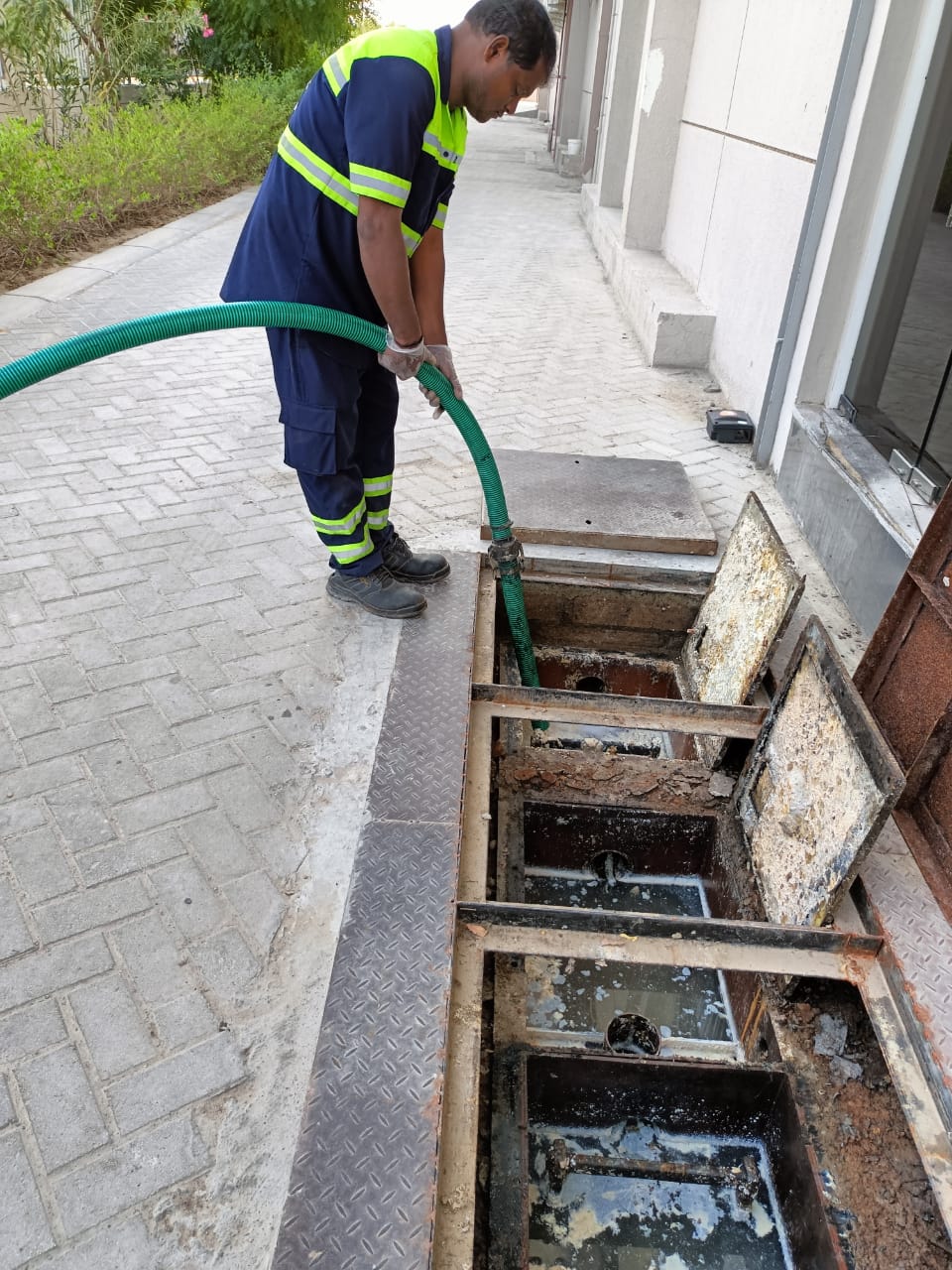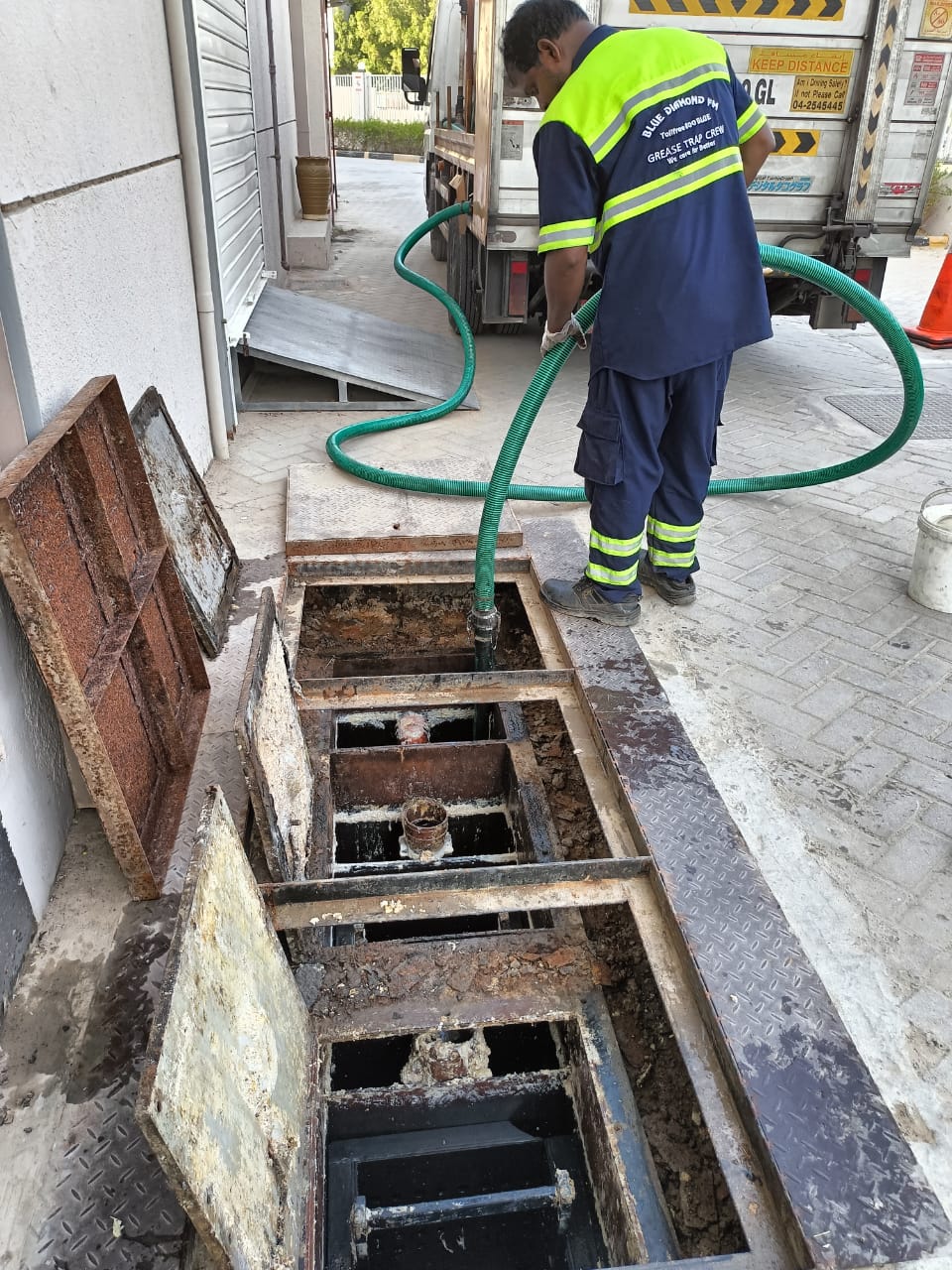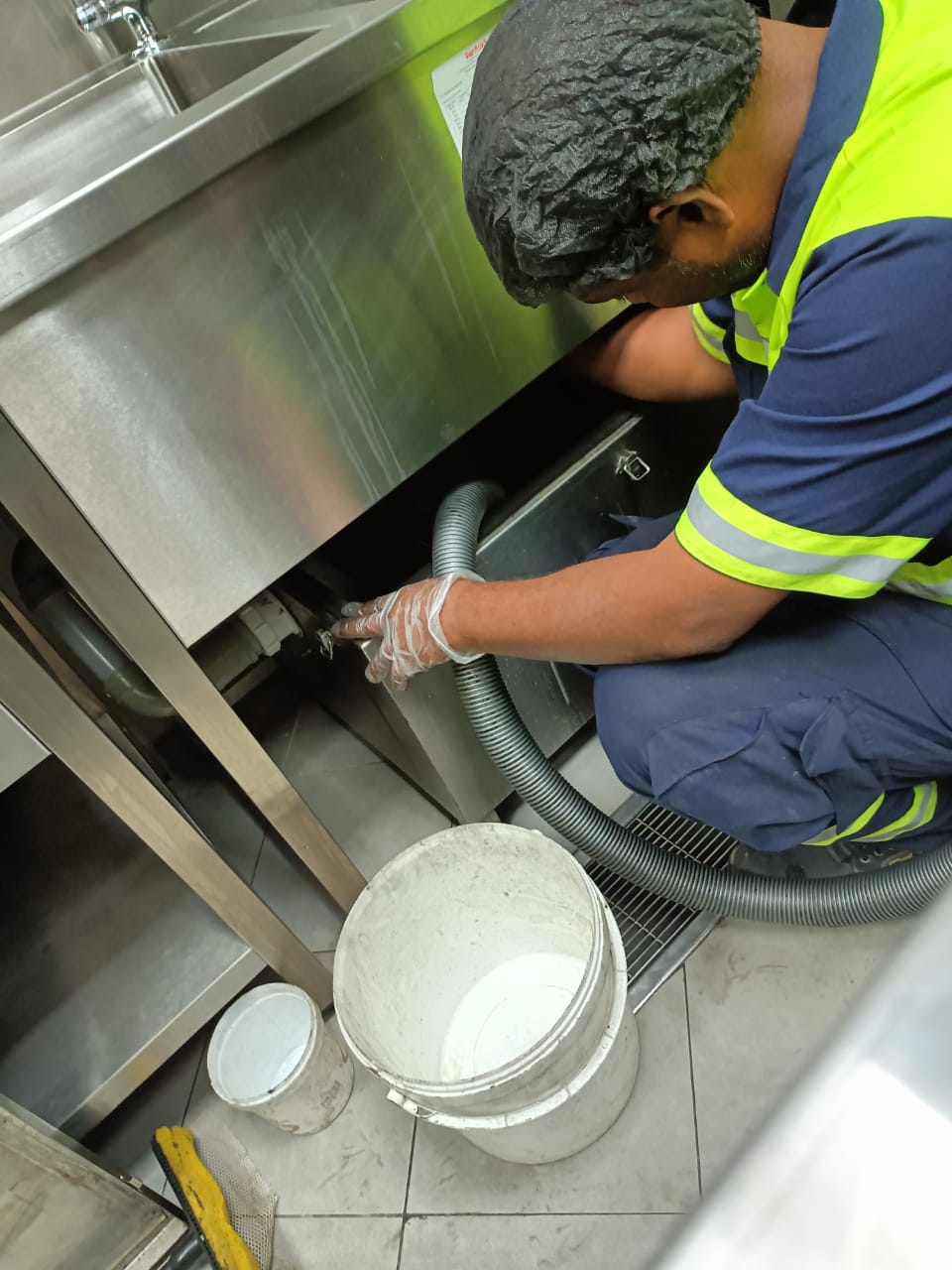grease trap cleaning methods?
- Grease_Trap_Cleaning

Table of Contents
Effective Grease Trap Cleaning Methods
Grease traps are essential components of commercial kitchen drain systems. They are special plumbing devices designed to intercept grease waste and solids before entering sewer lines. Over time, layers of thick grease, food scraps, fats, and oils can accumulate inside if not properly maintained.
Clogged grease traps can lead to foul odors, plumbing blockages, sewage backups, and even health hazards if left unaddressed.
Implementing effective grease trap cleaning methods is vital for operational efficiency and compliance.
What Are Grease Traps?
Grease traps work by slowing down kitchen drainage water long enough for greases to separate and cool. This allows the lighter grease to float to the top while heavier solids sink to the bottom, preventing them from traveling down sewers where they can stick to pipe walls and restrict flow.
There are a few common types of grease traps used in commercial facilities:
1 Passive Grease Traps: These simple, single-compartment traps are the most affordable option but require the most frequent grease trap clean out. They rely on gravity and retention time for separation.
2 Mechanical Grease Interceptors: These have flow control fittings and multi-compartment designs that enhance separation efficiency with less maintenance needed.
3 Automatic Grease Removal: Pricier automated systems continually remove grease onsite with skimmers or oil lifting pumps into separate containment.
When selecting a device, the appropriate size and flow rate capacity must be calculated based on the number of connected fixtures, meals served, and hours of operation.
Why Regular Grease Trap Cleaning Method is Crucial
Industry experts recommend examining grease traps at least every 1-3 months and cleaning them as needed based on accumulation. Commercial kitchens should establish compliance with local municipal codes which dictate legal limits for fats, oils, and grease (FOG) being discharged.
More frequent grease trap cleaning is necessary for high volume establishments.
Here are some visible signs a greasy residue is building up too quickly:
1 Slow draining fixtures or backups
2 Rancid odors around kitchen floors or trap area
3 Bubbling overflow drain outside
4 Poor wastewater distribution across traps
Ignoring overdue maintenance leads to corrosive organic breakdowns and blockages requiring extensive plumbing repairs.
Professional Grease Trap Cleaning Services
For commercial sites with large external grease traps or interceptors, specialized cleaning equipment is required.
Grease trap cleaning solutions offered by professional services include:
Hydro Jetting: High pressure hot water blasted through hoses can dissolve thick grease linings and force out waste. Vacuum trucks then remove it.
Chemical Treatments: Degreasing agents (bacteria or enzyme solutions) break down FOG when applied. But may require manual agitation like power washing.
Mechanical Cutters: Rotating blades chop up solidified grease chunks into smaller pieces for removal by pumps.
Alternative Disposal: Some companies convert waste grease into biodiesel fuel to prevent landfill dumping.
Establishments can enroll in a maintenance agreement or service contract with scheduled visits rather than individual on-demand calls. Companies should check qualifications, procedures, and compliance records when selecting a grease trap cleaning provider.
Tips to Extend Grease Trap Cleaning Cycles
Here are some habits and kitchen procedures restaurants can implement to prolong the usable lifespan between intensive grease trap clean out sessions:
* Allow hot oils, fats, and grease to fully cool before pouring down sinks. Thermal shock cracks interceptors.
* Place sink strainers and screens over drains to limit food particles entering system.
* Adhere to manufacturer specs for flow capacity -verify grease trap size can handle peak usage periods.
* Ensure proper pH neutralization of dishwasher water with chemical additives before discharge. High acidity degrades traps faster.
* Train staff to only use designated sinks connected to grease trap. Leakage via other drains bypasses the system.
* Post signage reminding employees to scrape, dry wipe, and recycle larger volumes of oil and grease rather than rinsing remains down drains.
When Grease Trap Cleaning is Needed Immediately
If any of the following warning signs are observed around floor drains, grease traps, outside effluent outlets, or connected plumbing fixtures, contact cleaning professionals promptly to avoid major problems:
* Strong rancid odors coming from drains or equipment
* Sink water pooling higher than normal or draining extremely slowly
* Overflow discharge outside bubbling up from ground/manhole
* Grease trap lids opening more frequently from buildup pressure
* Plumbing backups in kitchen or restrooms
Ignoring deteriorating conditions heightens risk of hygiene issues and closure by health departments. By tackling maintenance early, facilities get ahead of infections, pipe damage, and environmental contamination.



Conclusion :
Like changing the oil for a car or replacing air filters in ventilation systems, grease trap cleaning prevents bigger headaches down the road.
For heavy usage commercial kitchens, outside companies with vacuum trucks and jet sprayers make the exhaustive task easier. DIY chemical solutions or manual scrubbing manages smaller under-sink style traps.
But all traps need vigilant inspections to determine appropriate cleaning cycles specific to the load. Caustic drain clogs, slow flowing water, foul stenches, and pest control concerns signal services cannot be deferred much longer.
Adopting attentive grease handling procedures minimizes waste accumulation. However, at some point congested residue requires thorough removal and disposal to sustain operations.
How often should I clean my grease trap?
Can I clean the grease trap myself?
What happens if I don't clean the grease trap regularly?
Are there eco-friendly methods for grease trap cleaning?
How do I identify a malfunctioning grease trap?
Is grease trap cleaning necessary for small kitchens too?
Share this
Book An Appointment Today
Blue Diamond would like to hear from you. if you have business inquiries. Get in touch with us.
